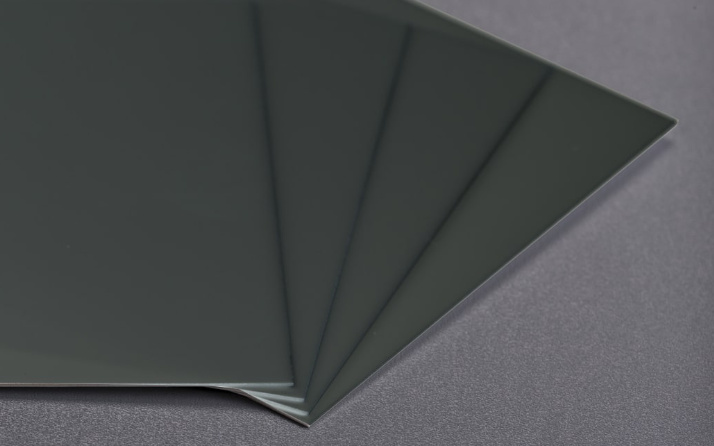산업에서 극심한 마모, 고온, 부식성 환경을 어떻게 처리하는지 궁금한 적이 있으신가요? 그 해답은 제조와 엔지니어링에 조용히 혁명을 일으키고 있는 소재에서 찾을 수 있습니다: 카바이드 플레이트.
이것은 일상적인 금속판이 아닙니다. 놀라운 경도를 자랑하는 소재인 텅스텐 카바이드로 제작된 초경판은 수많은 제품과 공정의 숨은 주역입니다. 카바이드 플레이트가 진정한 변화를 가져오는 10가지 흥미로운 응용 분야에 대해 자세히 알아보세요.

1. 금속 성형: 우리 주변의 세상 만들기
자동차 부품부터 주방 가전제품까지, 금속 성형은 수많은 일상용품에 필수적입니다. 다이, 펀치, 마모 플레이트에 사용되는 초경 플레이트는 이러한 공정이 정밀하고 오래 지속되도록 보장합니다. 압력에 의한 마모와 변형에 대한 저항력이 뛰어나 생산 라인을 원활하게 가동하고 엄격한 기준을 충족하는 제품을 생산할 수 있습니다.
2. 절단 및 가공: 오래 가는 도구
가장 날카로운 공구를 생각해보세요. 이제 더 튼튼한 공구를 상상해 보세요. 절삭 공구, 톱 팁, 드릴 비트에 카바이드 인서트를 사용하면 절삭 속도가 빨라지고, 마감 처리가 매끄러워지며, 공구 수명이 훨씬 길어집니다. 이는 목공, 금속 가공, 건설과 같은 산업 전반에서 비용 절감과 효율성 향상으로 이어집니다.
3. 자재 취급: 원활한 업무 진행
석탄, 광석 또는 곡물과 같은 연마성 물질을 이동하면 장비가 손상될 수 있습니다. 슈트, 호퍼, 컨베이어의 카바이드 마모 라이너는 보호 갑옷 역할을 하여 마모를 최소화합니다. 이를 통해 원활한 자재 흐름을 보장하고 유지보수를 위한 가동 중단 시간을 줄이며 고가의 장비의 수명을 연장할 수 있습니다.
4. 석유 및 가스 탐사: 극한 환경으로의 모험
석유 및 가스 시추 작업은 고압, 마모성 지층, 부식성 물질 등 고유한 과제를 안고 있습니다. 카바이드 플레이트는 다운홀 드릴링 공구, 마모 링 및 기타 구성품에서 중요한 역할을 하며 이러한 까다로운 조건에서 신뢰성과 성능을 보장합니다.
5. 건설 및 광업: 험난한 작업 환경에서의 원동력
건설과 광업은 엄청난 스트레스를 견뎌야 하는 중장비에 의존합니다. 드릴링 장비, 파쇄 장비 및 굴삭기의 카바이드 마모 부품은 마모, 충격 및 마모로부터 중요 부품을 보호하여 유지보수 필요성을 줄이고 장비 수명을 연장합니다.
6. 항공우주: 새로운 차원에 도달하기
가벼우면서도 매우 강한 초경 플레이트는 베어링, 씰, 연료 시스템 부품과 같은 항공우주 부품에 사용됩니다. 마모, 열, 부식에 대한 내성이 뛰어나 까다로운 비행 조건에서도 신뢰성과 성능을 보장합니다.
7. 화학 처리: 부식성 물질 취급
화학 공정에는 장비를 빠르게 저하시킬 수 있는 부식성이 강한 물질을 취급하는 경우가 많습니다. 내식성이 뛰어난 카바이드 플레이트는 펌프, 밸브 및 반응기 라이닝에 사용되어 안전을 보장하고 중요 부품의 수명을 연장합니다.
8. 식품 가공: 위생 및 내구성 보장
식품 가공에서는 위생을 유지하는 것이 무엇보다 중요합니다. 카바이드 칼날과 절삭 공구는 강철에 비해 내마모성과 내식성이 뛰어나 오염 위험을 줄이고 더 깨끗한 절삭을 보장합니다.
9. 의료 기기: 정밀성 및 생체 적합성
카바이드는 경도와 생체 적합성이 뛰어나 수술 기구, 치과용 버, 임플란트와 같은 의료 기기에 사용하기에 적합합니다. 마모와 부식에 대한 내성은 이러한 중요한 응용 분야에서 수명과 신뢰성을 보장합니다.
10. 재활용 및 폐기물 관리: 루프 닫기
카바이드 플레이트는 수명이 다한 후에도 여전히 가치가 있습니다. 텅스텐의 높은 가치로 인해 카바이드 스크랩은 종종 재활용되어 자원 절약과 환경 영향 감소에 기여합니다.
카바이드 플레이트 속성: 자세히 살펴보기
| 속성 | 설명 | 혜택 |
|---|---|---|
| 경도 | 로크웰 A 스케일(HRA)로 측정되며, 일반적으로 85 HRA를 초과합니다. | 마모, 마모 및 변형에 대한 탁월한 내구성. |
| 압축 강도 | 극한의 압축력을 견딜 수 있습니다. | 무거운 하중과 충격이 수반되는 애플리케이션에 이상적입니다. |
| 내열성 | 높은 온도에서도 그 특성을 유지합니다. | 고온 애플리케이션에 적합합니다. |
| 내식성 | 화학 물질과 열악한 환경으로 인한 부식에 대한 내성이 뛰어납니다. | 까다로운 환경에서 사용하기에 탁월합니다. |
표 1: 카바이드 플레이트의 주요 특성
FAQ: 카바이드 플레이트 응용 분야에 대한 질문에 답하기
1. 카바이드 플레이트를 다른 재료에 비해 사용하면 어떤 주요 이점이 있나요?
카바이드 플레이트는 대부분의 다른 소재에 비해 경도, 내마모성, 내열성, 내식성이 뛰어나 수명과 성능이 중요한 까다로운 응용 분야에 이상적입니다.
2. 카바이드 플레이트는 중공업에만 사용되나요?
카바이드 플레이트는 중공업 분야에서 널리 사용되지만 내구성과 정밀성이 필수적인 의료 기기, 식품 가공, 고급 소비재 등 다양한 분야에서도 사용됩니다.
3. 카바이드 플레이트를 특정 요구 사항에 맞게 가공하거나 성형할 수 있나요?
예, 경도로 인해 까다롭기는 하지만 초경판은 EDM(방전 가공) 및 다이아몬드 연삭과 같은 특수 기술을 사용하여 특정 모양과 치수를 얻을 수 있습니다.
4. 용도에 따라 카바이드 플레이트의 등급이 다른가요?
예, 다양한 등급의 카바이드 플레이트를 사용할 수 있으며, 각각 특정 용도에 맞는 특정 특성 조합을 갖추고 있습니다. 필요한 경도, 인성, 내마모성 등의 요소에 따라 최적의 등급이 결정됩니다.
5. 일반적인 카바이드 플레이트의 수명은 어떻게 되나요?
카바이드 플레이트의 수명은 적용 분야, 작동 조건 및 유지보수 관행에 따라 크게 달라집니다. 하지만 카바이드 플레이트는 뛰어난 내마모성으로 인해 다른 재료로 만든 부품보다 수명이 훨씬 길어 가동 중단 시간과 유지보수 비용이 절감되는 경우가 많습니다.
우수한 품질의 카바이드 플레이트를 적절한 가격에 구매하고 싶으신가요? 클릭 여기.




